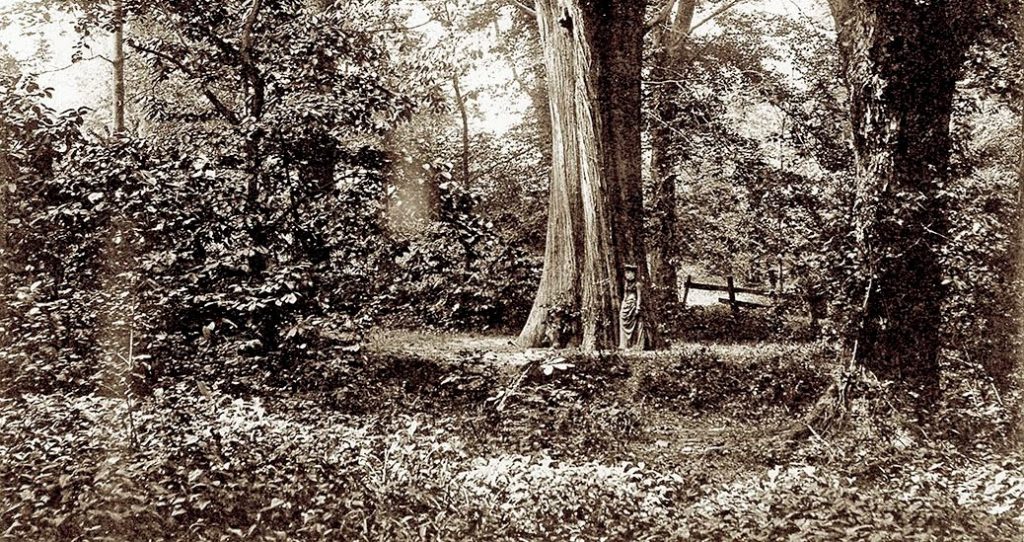With April showers behind us, we welcome the blossoms of May!
On Sunday May 4 at 1:30, Bartram’s Garden will host a second performance of Native Plants underneath the historic ginkgo tree. The first performance was this past Thursday at the Rosenbach. Two students from Richard Stockton College recited poetry as well as read aloud excerpts from Moore and Williams’ correspondence.
Ciara Barrick of the
Moore/Williams Project, introduced the program, and the concept for the performance:
Moore/Williams Project, introduced the program, and the concept for the performance:
“In the version of Marianne Moore’s poem
“The Steeplejack” published in 1932, there is a rather lengthy list
of plants. They fall, basically, into three categories– those that are
native to a harsh New England environment (these have coarse names like spiderwort,
lichens, and sunflowers), those that have been transplanted and are found
nurtured at the backdoor, such as fox-glove, morning-glories, and moon-vines; and
those we are told the climate is not right for—more exotic plants like the
banyan and frangipani.
“The Steeplejack” published in 1932, there is a rather lengthy list
of plants. They fall, basically, into three categories– those that are
native to a harsh New England environment (these have coarse names like spiderwort,
lichens, and sunflowers), those that have been transplanted and are found
nurtured at the backdoor, such as fox-glove, morning-glories, and moon-vines; and
those we are told the climate is not right for—more exotic plants like the
banyan and frangipani.
For both Moore
and Williams, the notion that the artist must transplant him or herself to
Europe in order to create real art or literature meant giving up on the desire
to create something truly and originally American. The position of
Moore and Williams was especially difficult, because the desire to be at
the same time modern and American meant they had to work hard to establish a
place on their home soil. As Henry Louis Mencken notes, “the battle
for ideas in the United States is largely carried on under strange flags” which
accounts for the fact that many young American writers “–once they become
fully conscious of their foreign affiliation–desert the republic forthwith”
(Prejudices II. 49, 51).
and Williams, the notion that the artist must transplant him or herself to
Europe in order to create real art or literature meant giving up on the desire
to create something truly and originally American. The position of
Moore and Williams was especially difficult, because the desire to be at
the same time modern and American meant they had to work hard to establish a
place on their home soil. As Henry Louis Mencken notes, “the battle
for ideas in the United States is largely carried on under strange flags” which
accounts for the fact that many young American writers “–once they become
fully conscious of their foreign affiliation–desert the republic forthwith”
(Prejudices II. 49, 51).
Van Wyck Brooks, in
his influential America’s
Coming of Age (1915), thought
that modern ideas coming from Europe lost their potency on the journey. He
writes: “The sea crossing, so far as we are concerned, has a very
dampening effect on the gunpowder contained in them [the ideas]. Transplanted they have at once the
pleasing remoteness of literature and the stir of only half-apprehended
actuality” (162). His use
of “transplanted” is part of a running metaphor through the book linking
literature and gardening. “England,
to be sure, is just as much a wilderness as America. All I am urging is that while England
has at least a handful of trained gardeners, all we have is cowboys and a flag”
(157). It is not surprising then that gardening became an important
literary metaphor for both Moore and Williams. The poems that have been selected for today’s performance seek to
reflect both Moore and William’s preoccupation with being native, as well as to
take advantage of our desire for spring through the poems’ natural settings and
imagery.”
his influential America’s
Coming of Age (1915), thought
that modern ideas coming from Europe lost their potency on the journey. He
writes: “The sea crossing, so far as we are concerned, has a very
dampening effect on the gunpowder contained in them [the ideas]. Transplanted they have at once the
pleasing remoteness of literature and the stir of only half-apprehended
actuality” (162). His use
of “transplanted” is part of a running metaphor through the book linking
literature and gardening. “England,
to be sure, is just as much a wilderness as America. All I am urging is that while England
has at least a handful of trained gardeners, all we have is cowboys and a flag”
(157). It is not surprising then that gardening became an important
literary metaphor for both Moore and Williams. The poems that have been selected for today’s performance seek to
reflect both Moore and William’s preoccupation with being native, as well as to
take advantage of our desire for spring through the poems’ natural settings and
imagery.”


